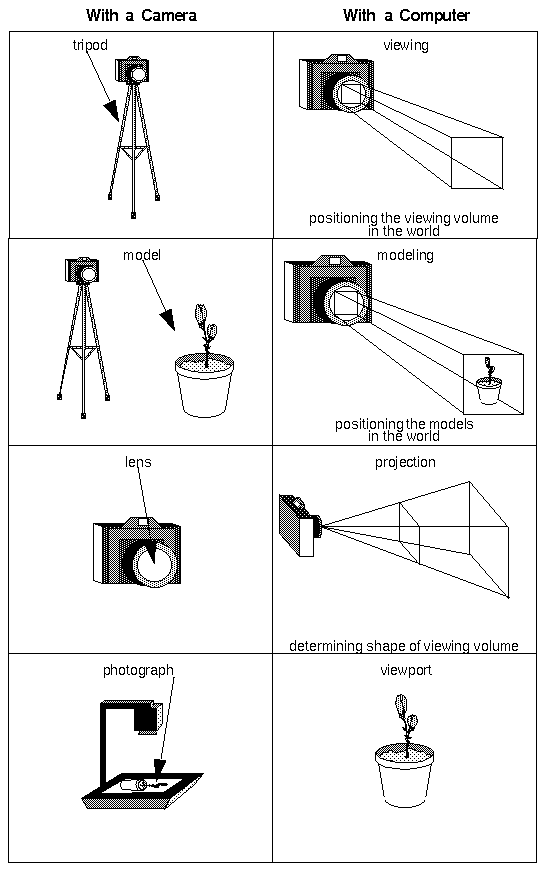|
The Camera Analogy:
-
To Produce a photograph the following steps have to be taken:
(Figure 3-1)

1. Set up your tripod and pointing the camera at the scene
(viewing transformation).
2. Arrange the scene to be photographed into the desired
composition (modeling transformation).
3. Choose a camera lens or adjust the zoom (projection
transformation).
4. Determine how large you want the final photograph
to be - for example, you might want it enlarged (viewport transformation).
|
|